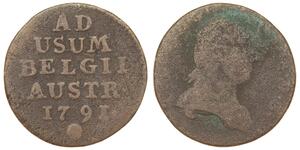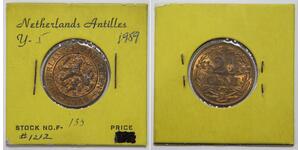(продана за $109.0)
1433, Kingodm of Portugal, John I (Joao I). Scarce Silver Real Blanco Coin. R!
Mint Place: Lisbon
Condition: About XF!
Reference: Gomes 52.
Mint period: 1385-1433 AD
Denomination: Real Blanco
Diameter: 27mm
Material: Silver
Weight: 2.99gm
Obverse: Crowned initial ("Y"), control letter to left. All within double band of legends.
Reverse: Shields of arms as cross ("quinas cross") within quadrilobe. All within double band of legends.
John I (Portuguese: João, 11 April 1357 – 14 August 1433) was King of Portugal and the Algarve in 1385–1433. He was called the Good (sometimes the Great) or of Happy Memory, more rarely and outside Portugal, in Spain, the Bastard, and was the first to use the title Lord of Ceuta. He preserved the kingdom's independence from Castile.
John was born in Lisbon as the natural son of Peter I by a woman named Teresa, who, according to Fernão Lopes, was a noble Galician. In the 18th century, António Caetano de Sousa found a 16th-century document in the archives of the Torre do Tombo, wherein she was named as Teresa Lourenço. In 1364, by request of D. Nuno Freire de Andrade, a Galician Grand Master of the Order of Christ, he was created Grand Master of the Order of Aviz, by which title he was known.
On the death of his half-brother Ferdinand I without a male heir in October 1383, strenuous efforts were made to secure the succession for Princess Beatrice, Ferdinand's only daughter. As heiress presumptive, Beatrice had married king John I of Castile, but popular sentiment was against an arrangement in which Portugal would have been virtually annexed by Castile. The 1383–1385 Crisis followed, a period of political anarchy, when no monarch ruled the country.
On 6 April 1385, the Council of the Kingdom (the Portuguese Cortes) met in Coimbra and declared John, then Master of Aviz, King of Portugal. This was followed by the liberation of almost all of the Minho in the course of two months, in the war against Castile and its claims to the Portuguese throne. Soon after, the King of Castile again invaded Portugal with the purpose of conquering Lisbon and removing John I from the throne. John I of Castile was accompanied by French allied cavalry while English troops and generals took the side of John of Aviz (see Hundred Years' War). John and Nuno Álvares Pereira, his Constable and talented supporter, repelled the attack on the decisive Battle of Aljubarrota (14 August 1385). John I of Castile then retreated. The Castilian forces abandoned Santarém, Torres Vedras, Torres Novas, many other towns were delivered to John I by Portuguese nobles from the Castilian side and the stability of the Portuguese throne was permanently secured.
On 11 February 1387, John I married Philippa of Lancaster, daughter of John of Gaunt, who had proved to be a worthy ally, consolidating the Anglo-Portuguese Alliance that endures to the present day.
After the death of John I of Castile in 1390, without issue by Beatrice, John I of Portugal ruled in peace and pursued the economic development of the country. The most significant military actions were the siege and conquest of the city of Ceuta by Portugal in 1415, and the successful defence of Ceuta from a Moroccan counter attack in 1419. By this step he aimed to seize control of navigation off the African coast, and trade routes from the interior of Africa.
The raids and attacks of the Reconquista created captives on both sides, who were either ransomed or sold as slaves. The Portuguese crown extended this to North Africa. After the attack on Cueta, the king sought papal recognition of it as a crusade. Such a ruling would enable those captured to be legitimately sold as slaves.
John I requested and obtained from Pope Martin V a Papal bull, Sane charissimus, of 4 April 1418, confirming to the king all the lands he should take from the Moors. Political weakness compelled the Renaissance Papacy to adopt an acquiescent and unchallenging position when approached for requests for privileges in favour of these ventures. Under the auspices of Prince Henry the Navigator, voyages were organized to explore the African coast which led to the discovery of the uninhabited islands of Madeira in 1417, and the Azores in 1427, which were claimed by the Portuguese crown.
Contemporaneous writers describe John as a man of wit, very keen on concentrating power on himself, but at the same time with a benevolent and kind personality. His youthful education as master of a religious order made him an unusually learned king for the Middle Ages. His love for knowledge and culture was passed to his sons, often collectively referred to by Portuguese historians as the "illustrious generation" (Ínclita Geração): Edward, the future king, was a poet and a writer; Peter, the Duke of Coimbra, was one of the most learned princes of his time; and Prince Henry the Navigator, the duke of Viseu, invested heavily in science and the development of nautical pursuits. In 1430, John's only surviving daughter, Isabella, married Philip the Good, Duke of Burgundy, and enjoyed an extremely refined court culture in his lands; she was the mother of Charles the Bold.
John I married in Porto on 2 February 1387 Philippa of Lancaster, daughter of John of Gaunt, 1st Duke of Lancaster and Blanche of Lancaster. From that marriage were born several famous princes and princesses of Portugal (infantes) that became known as the Illustrious Generation (Portuguese: Ínclita Geração).
Only 1$ for each additional item purchased!

|
Добавив:
anonymous 2016-02-19 |
1 Liard Австрійські Нідерланди (1713-1795) Мідь
в групі 7 монет / 7 цін
⇑
2 1/2 Цент Нідерланди
в групі 18 монет / 14 цін
⇑

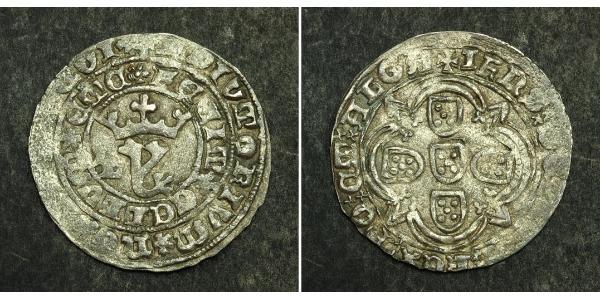





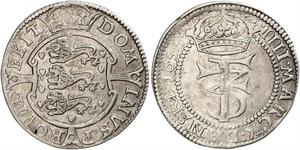
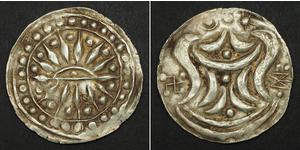






-300-150-NgSsHgTyCiIAAAGW1HxyjNgw.jpg)
